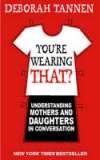
-
 Anglický jazyk
Anglický jazyk
Collective intelligence
Autor: Source: Wikipedia
Source: Wikipedia. Pages: 49. Chapters: Meme, Swarm intelligence, User-generated content, Open source intelligence, Collective memory, Helium.com, E-participation, Bees algorithm, Collaborative filtering, Smart mob, The IRG Solution, Social choice theory,... Viac o knihe
Na objednávku
16.11 €
bežná cena: 17.90 €
O knihe
Source: Wikipedia. Pages: 49. Chapters: Meme, Swarm intelligence, User-generated content, Open source intelligence, Collective memory, Helium.com, E-participation, Bees algorithm, Collaborative filtering, Smart mob, The IRG Solution, Social choice theory, Socially Distributed Cognition, Jumper 2.0, Civic intelligence, Knowledge tags, Central media, Superorganism, Learner generated context, Dotmocracy, Wreckamovie, Collective wisdom, Collective consciousness, Artificial Bee Colony Algorithm, Cold start, System justification, Group intelligence, Knowledge Plaza, Decentralized decision making, The Lucifer Principle, Adaptive website, Open Source Center, MyBlogLog, Collaborative intelligence, Urtak, Organizational intelligence, Scarab Research, Science.tv, Digital public square, Consumer-generated marketing, DailyPerfect, Social data analysis. Excerpt: A meme ( ) is an idea, behavior or style that spreads from person to person within a culture. A meme acts as a unit for carrying cultural ideas, symbols or practices, which can be transmitted from one mind to another through writing, speech, gestures, rituals or other imitable phenomena. Supporters of the concept regard memes as cultural analogues to genes in that they self-replicate, mutate and respond to selective pressures. The word 'meme' is a shortening (modeled on 'gene') of 'mimeme' (from Ancient Greek µ¿µ¿µa Greek pronunciation: mimema, "something imitated", from µ¿µe¿s¿a¿ mimeisthai, "to imitate", from µ¿µ¿¿ mimos "mime") and it was coined by the British evolutionary biologist Richard Dawkins in The Selfish Gene (1976) as a concept for discussion of evolutionary principles in explaining the spread of ideas and cultural phenomena. Examples of memes given in the book included melodies, catch-phrases, fashion and the technology of building arches. Advocates of the meme idea say that memes may evolve by natural selection in a manner analogous to that of biological evolution. Memes do this through the processes of variation, mutation, competition and inheritance, each of which influence a meme's reproductive success. Memes spread through the behaviors that they generate in their hosts. Memes that propagate less prolifically may become extinct, while others may survive, spread and (for better or for worse) mutate. Memes that replicate most effectively enjoy more success. Some memes may replicate effectively even when they prove to be detrimental to the welfare of their hosts. A field of study called memetics arose in the 1990s to explore the concepts and transmission of memes in terms of an evolutionary model. Criticism from a variety of fronts has challenged the notion that scholarship can examine memes empirically. Developments in neuroimaging may however make empirical study possible. Some commentators question the idea that one can meaningfully categorize cul
- Vydavateľstvo: Books LLC, Reference Series
- Rok vydania: 2013
- Formát: Paperback
- Rozmer: 246 x 189 mm
- Jazyk: Anglický jazyk
- ISBN: 9781156829615












